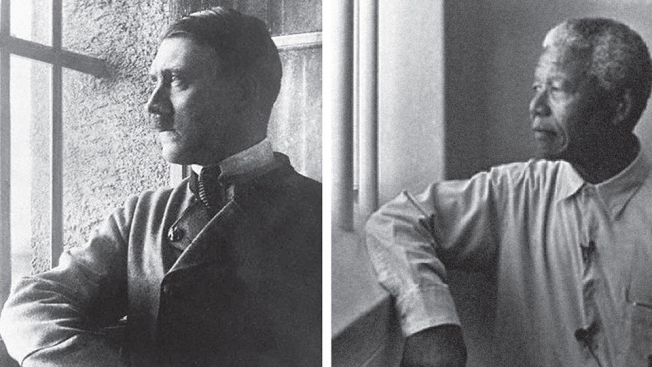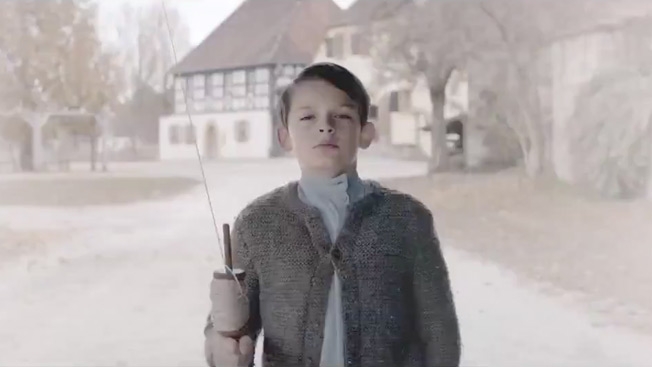This Agency Ran a Print Ad About How Angry It Was That No One Ran Its Print Ad
Posted in: Uncategorized
Here’s the moment when spec advertising finally digests its own tail.
The Open Collaboration (aka, OpenCo), a South African agency majority owned by TBWA, whipped up what it apparently considers a masterpiece of social-cause messaging—a print ad showing side-by-side photos of Hitler and Mandela in prison. Hitler served nine months, the copy explains, while Mandela served 27 years.
“People do not always get the justice they deserve,” says the copy below. “We’re doing everything we can to change that.”
Here’s the proposed ad. Click to enlarge:

As you can see, there is a blank space where the logo should go. That’s because it’s a spec ad, done without client approval—indeed, without a specific client in mind here. But OpenCo hoped some group devoted to righting unnamed injustices in the world would, after initially fainting at the ad’s brilliance, slap its logo on there.
That didn’t happen. So OpenCo, feeling offended, decided to do something even more solipsistic than regular spec work. It went and made another ad about the first ad, describing it in detail—to call attention to this fresh injustice, and hopefully get the spec ad in front of someone “brave enough to run it.”
Here’s that ad. Click to enlarge:

There’s so much that’s odd about this, even if you accept that it’s not just a cynical PR play (though the whole “This is not a print ad” thing does seem aimed at ad people).
First of all, the creative is provocative—it would be offensive to many—and might not align at all with any organization’s marketing needs. Not many people, after all, are all that fond of using Hitler in their ads.
Also, its internal logic is thorny at best. Hitler killed himself in disgrace, his dream destroyed, while Mandela was lionized. Focusing on the prison terms is a simplistic take on whether justice was served in either case. (Mandela’s family, by the way, would surely balk at seeing his image paired with Hitler’s under any circumstances—particularly when the message is how he got a raw deal compared to the Nazi leader.)
The bigger issue, though, is the arrogance. This is spec work. Getting indignant when no one buys it makes you look like a fool. And in this case, it’s worse than that. OpenCo isn’t just complaining about intransigent would-be clients rejecting its work. It’s flat-out calling them cowards. That’s a pretty rich point of view for an ad agency to take of nonprofits doing real social work.
Let’s assume this stunt was well meaning. (We emailed OpenCo a while back, but haven’t heard back yet.) Maybe next time, if they really want to fight injustice in the world, they can start by not publicly shaming organizations that do so every day.
![]()










